Stories of surveillance at MIT’s Open Doc Lab
By Brett Gaylor, Mozilla
From December 4–7, 2017, myself and 3 other media makers took part in the Stories of Surveillance workshop hosted by the Co-Creation Studio at MIT’s Open Doc Lab. The Open Doc Lab is a cross disciplinary environment where storytellers, technologists, academics and activists advance the practice of documentary. Situated within the lab is the Co-Creation studio, led by Emmy award winning documentarian Kat Cizek. For 4 days, Mozilla fellows, a Co-Creation Studio fellow and guests workshopped a series of projects that aimed to disrupt traditional narratives around privacy and surveillance. These projects had emerged from a collaboration between the Open Society Foundation and Mozilla to shift public narratives away from the false binary of privacy vs. security towards a more holistic discussion of the cultural impact of ubiquitous surveillance.
As we arrived at the Lab, Kat had penned an intro and provocation:
“We at the Co-Creation Studio at the MIT Open Documentary Lab (ODL) are excited to host four stellar makers who, through their diverse approaches to media, are exploring surveillance, counter- surveillance, big data and even the shit of the internet. It’s all fair game. How do we tell the most important yet most invisible stories of our time? And, how can co-creation help shift the narrative — and impact *real-world* change — on these complex problems? In that spirit, for the week, we’re partnering each creator with a mentor/sparring partner from the ODL community, to support, challenge and team up on the sprints set before you during the week.”
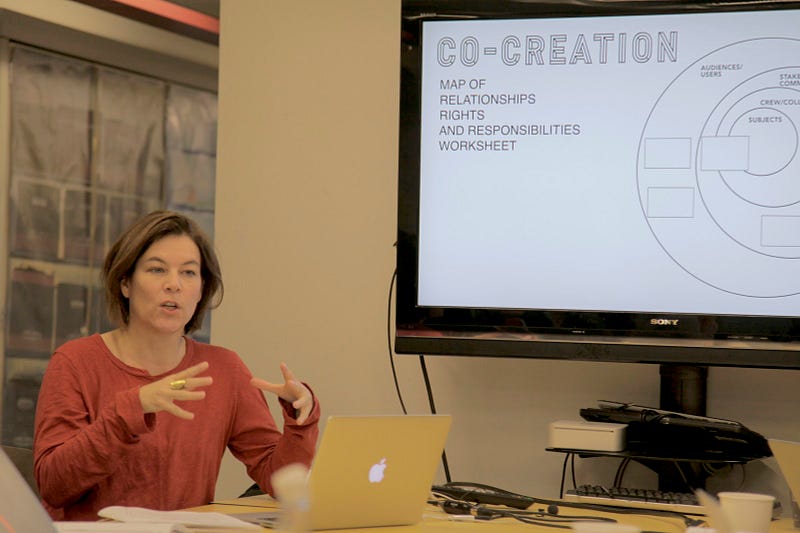
As makers, we were all ending the year at different points in the lives of our projects. I had just presented a documentary idea, The Internet of Sh*t, at the International Documentary Festival of Amsterdam’s financing forum. Mozilla fellow in media Joana Varon had recently published a series of stories, Chupadados, that examined the ways in which our bodies, pockets, homes and cities are surveilled by “data suckers.” Mozilla fellow in media Hang Do Thi Duc’s Data Selfie was being used by some 100,000 users, and she arrived with a new project to examine the public data available on Venmo. And finally, filmmaker and co-creation fellow Assia Boundaoui was editing her feature documentary The Feeling Of Being Watched, and beginning to plan its impact campaign.
While our approaches differed wildly, our projects were unified in exploring how audiences perceived their everyday surveillance. Each project aimed to generate a specific change of perception within a specific audience: we aimed for more than awareness, instead aiming for action.
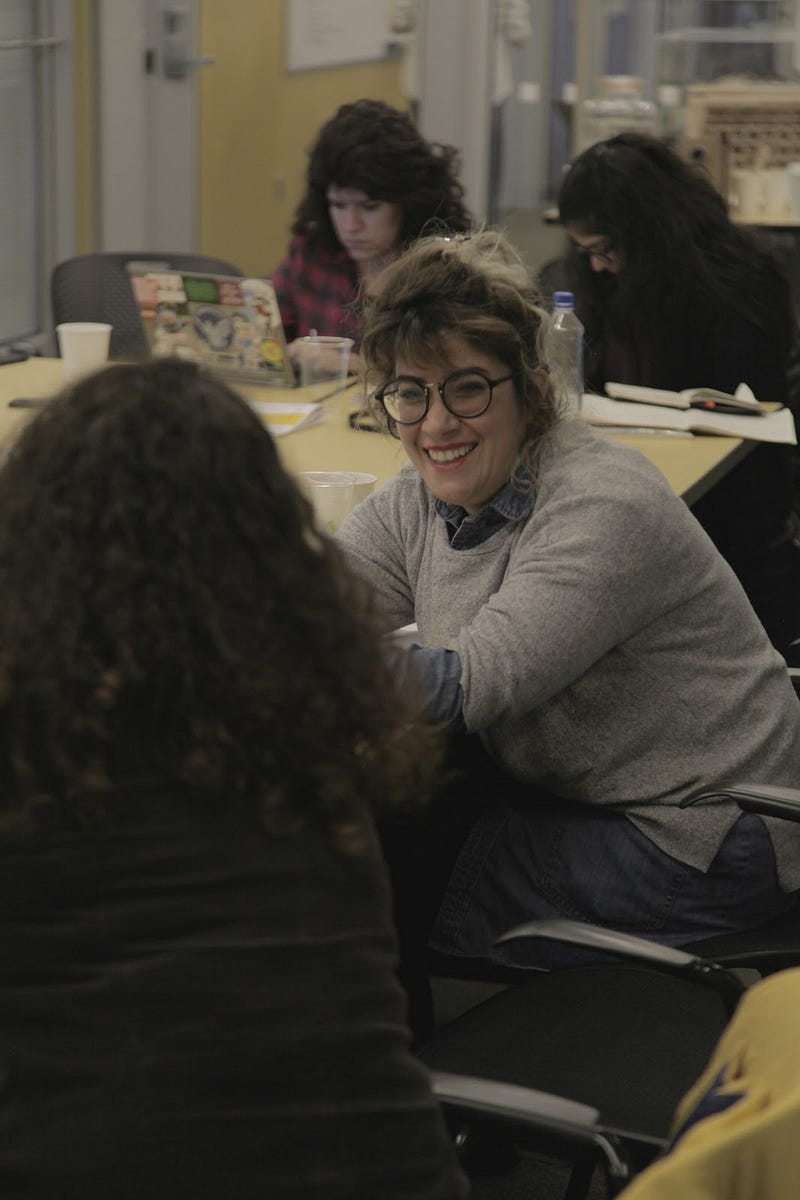
Mozilla and the Co-Creation team provided a support structure to help us with our task. We were each paired with a “sparring partner” from the ODL community who could ask questions, provoke and call bullshit. Award-winning filmmaker Anandana Kapur, photographer Danny Goldfield, new media artist Shirin Anlen, and VR practitioner and filmmaker Sandra Rodriguez were our guides.
As curriculum, they had beta versions of Kat’s co-creation process to think through. This material covered ground that any storyteller should answer about character, conflict, perspective and central organizing principle. A second co-creation session explored how to build relationships with audiences and communities that encourage going deeper into questions of reciprocity, motivation and protocols for collaboration. Throughout the workshop, Kat visited with us 1:1 to guide and provoke.
As project teams, we alternated between this work and an equally important set of concerns — developing our impact plans. Led by Harmony Lab’s Mary Joyce, this strategic process had us articulate the specific theory of change via a process she defined as Impact Design, which she defined in the following way:
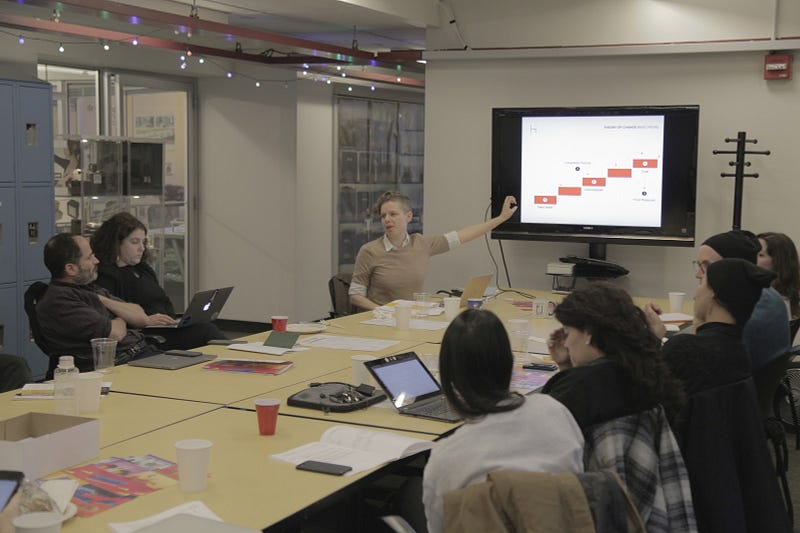
“To impact is to make change through action. To design is to create with intention. An impact design describes any kind of intentional creation process that aims to create change.”
Prior to arriving, Mary had asked us a set of prep questions:
- What one (1) goal would you like your media to achieve?
- What individuals or groups need to take action in order for you to achieve your goal?
- What are the key dependencies you’ll need to account for?
Based on our thinking and an evaluation of our projects to date, Mary worked us through a set of design decisions in our projects that we would then attach to key dependencies and changes of state. What needs to take place when? How will we know it is done? What needs to happen before we can move forward?
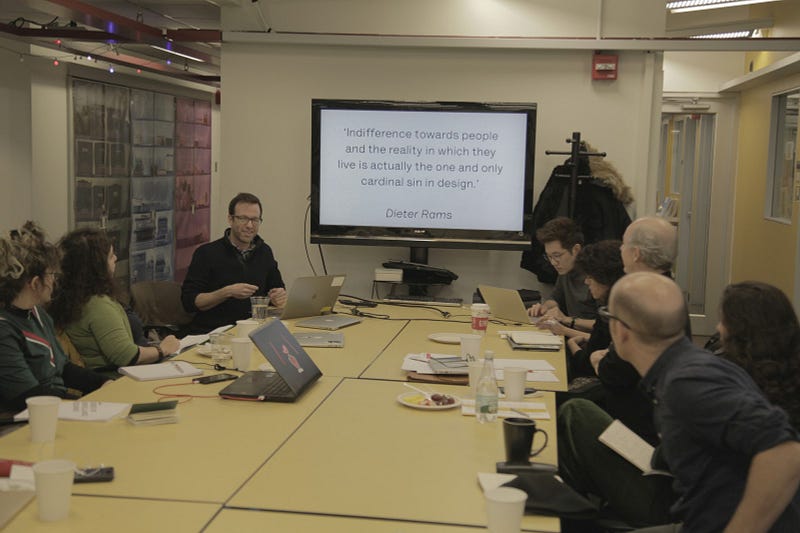
To ensure our minds were never at rest, Open Doc Lab director Sarah Wolozin and workshop producer Beyza Boyacioglu had arranged a set of keynote presentations from the broader MIT community. Lisa Parks, principal investigator of MIT’s Global Media Technologies and Cultures Lab, gave us a crash course in the seemingly endless programs of the United States surveillance apparatus in her talk “Surveillance Pressure Points: The Changing Privacy Landscape.” Sun-Ha, Mellon Postdoctoral Fellow in the Humanities at MIT, had us consider the implications of classifying humans according to an ever increasing set of data points in “Bodies unto Facts / Honeymoon Objectivity.” Futurist and designer Sands Fish had us consider the role that Speculative Design could play in imagining different futures for the surveillance state in “Weirding Design.” In her presentation AI perspectives Sarah Wolozin took us through some of the aesthetic, social, political, humanistic and ethical implications of Artificial Intelligence being explored by artists and scientists. And William Uricchio, principal investigator for the Open Doc Lab, presented “Moments in Innovation: The history of documentary innovations and technologies.”
William’s talk, while covering some of the many ways that technology served to further surveil people and change our perceptions of reality, also acted as a salve by reminding us that our current unease with the pace of technological change was nothing new: cultures had been reeling from these changes since before the first cameras.
Mozilla Fellow in Media Hang Do Thi Duc describes the productively overwhelming experience of the workshop:
“Everyone that I have listened to and talked to in the these four days has shaken up my project — in a good way. This will help me going forward, considering creative possibilities and approaches, and implications of my work. I feel very inspired I wish I could keep all these great and creative minds around me all the time!”
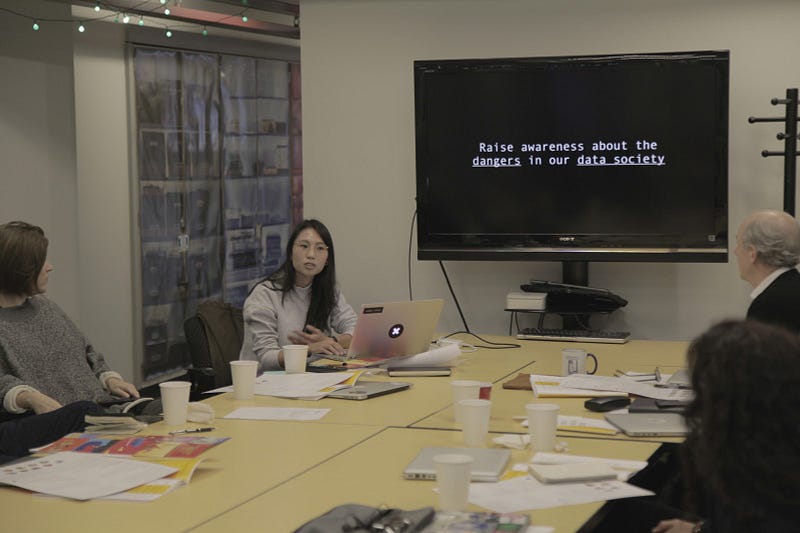
Joana Varon, also a Mozilla Fellow in Media, says “fighting back against the current narrative of I have nothing to hide, or changing the perception that innovation cannot happen with privacy, is not a simple task to solve. But I believe that creativity is our strongest tool to change this scenario. Being able to have a structured brainstorming with media and technology researchers about our stories of privacy and surveillance was definitely a step forward towards reaching a cool, fun and hopefully mind-changing user experience across our media content.”
As the week ended, each participant summarized the changes that had occurred in their thinking over the workshop, and presented their plans moving forward. For each of us, we left with more questions than answers — a natural effect of spending time at MIT. More profoundly, we left with plans. While making media with impact in collaboration with communities can feel daunting, it is usually the case that doing the work, asking the questions, and telling the right stories will build that path.
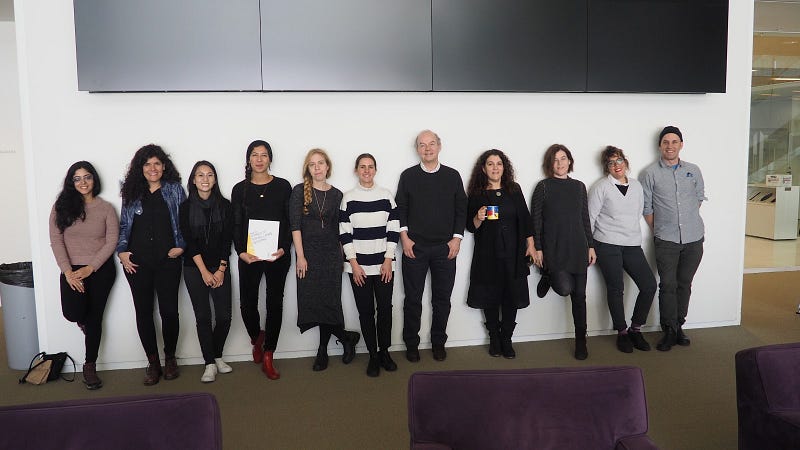
This post originally appeared in Mozilla’s Read, Write, Participate publication.
Immerse is an initiative of Tribeca Film Institute, MIT Open DocLab and The Fledgling Fund. Learn more about our vision for the project here.